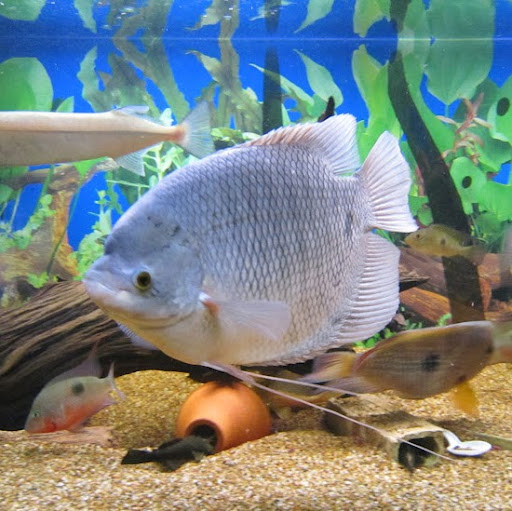Hong D Tan
age ~58
from San Ramon, CA
- Also known as:
-
- Hongdong D Tan
- Hongdong H Tan
- Roy H Tan
- Hongdon H Tan
- Dong Tan Hong
- Tan Hongdong
- Tan Hongdon
Hong Tan Phones & Addresses
- San Ramon, CA
- 4605 Spooner Cove Ct, Union City, CA 94587 • 510 441-1883
- 132 University Blvd, Ames, IA 50010 • 515 292-5103
- Fremont, CA
- San Jose, CA
- Sunnyvale, CA
- Flagstaff, AZ
Lawyers & Attorneys

Hong Tan - Lawyer
view sourceISLN:
922281266
Admitted:
2011
Law School:
Arizona State University, J.D., 2007
Us Patents
-
Tandem Isotachophoresis/Zone Electrophoresis Method And System
view source -
US Patent:6685813, Feb 3, 2004
-
Filed:Aug 20, 2001
-
Appl. No.:09/933993
-
Inventors:Stephen J. Williams - San Mateo CA
Hong Dong Tan - San Jose CA
Hung Pin Kao - Fremont CA
Wyatt N. Vreeland - Chicago IL -
Assignee:Aclara Biosciences, Inc. - Mountain View CA
-
International Classification:B01D 5902
-
US Classification:204549
-
Abstract:A method of separating components having a given negative or positive charge and contained in a sample is disclosed. The method involves, in one embodiment, loading a microchannel with a sample, placed between a trailing-edge electrolyte having a selected concentration of a titratable species, and a leading-edge electrolyte. With the application of a voltage potential across the microchannel, charged components in the sample stack by isotachophoresis, and electrolytic hydroxyl or hydrogen ions formed by electrolysis at the upstream-end electrode migrate into the trailing-edge ion buffer, titrating the titratable species therein, where the concentration of the titratable species in the trailing-edge electrolyte is selected, in relation to the lengths of the upstream channel region and sample-loading volume, to permit the sample to stack into a relatively small sample volume before electrolytic-ion migration from the upstream electrode into and through the sample-volume region is effective to overtake the charged sample components. With continued application of an electric potential across the channel ends, charged sample components in the stacked sample volume separate by zone electrophoresis.
-
Microfluidic Device With Sample Injector And Method Of Using
view source -
US Patent:6818113, Nov 16, 2004
-
Filed:Feb 10, 2001
-
Appl. No.:09/780638
-
Inventors:Stephen J. Williams - San Mateo CA
Hong Dong Tan - San Jose CA
Hung Pin Kao - Fremont CA
Wyatt N. Vreeland - Chicago IL -
Assignee:Aclara Biosciences, Inc. - Mountain View CA
-
International Classification:B01D 5702
-
US Classification:204453, 204601, 204450
-
Abstract:A method and device for injecting a liquid sample into an electrolyte channel in a microfluidics device is disclosed. The device has a channel network that includes an electrolyte channel having upstream and downstream channel portions and first, second, and third side channels that intersect the electrolyte channel between the two channel portions at first, second, and third ports, respectively. In the method, a sample is moved electrokinetically into the electrolyte channel, to form a defined sample volume therein. By simultaneously controlling the voltage applied to the three side channels, and at least one of the upstream and downstream channel end portions, the sample volume element can be shaped to have a desired leading- and trailing-edge shape and/or distribution of sample components within the volume elements.
-
Method For Fabricating Thallium-Doped Grin Lens
view source -
US Patent:6845634, Jan 25, 2005
-
Filed:Jun 20, 2002
-
Appl. No.:10/175945
-
Inventors:Hong Tan - Fremont CA, US
Youmin Liu - Palo Alto CA, US
Yushan Tan - Shanghai, CN -
Assignee:Wave Crossing Corporation - Palo Alto CA
-
International Classification:C03B 2500
-
US Classification:65 3013, 65 3014, 65114
-
Abstract:A fabrication method for a thallium-doped GRIN lens composed of a simplified glass composition is described. The composition is composed of silicon, oxygen, boron, zinc, potassium, sodium, and thallium. The method is comprised of preparing a cylindrical preform, annealing the cylindrical preform, removing contaminants from preform thereafter extruded to form a glass rod, exposing the glass rod to an alkali salt bath, and chemically milling the glass rod within an acid bath. Method and composition produce colorless lenses with a refractive index from 1. 5900 to 1. 7810, an insertion loss no greater than 0. 05 dB, and a chromatic transmittance greater than 90 percent.
-
Fiber-Optic Assay Apparatus Based On Phase-Shift Interferometry
view source -
US Patent:7319525, Jan 15, 2008
-
Filed:Jun 12, 2006
-
Appl. No.:11/423671
-
Inventors:Hong Tan - San Jose CA, US
Yushan Tan - Shanghai, CN
Krista Leah Witte - Hayward CA, US
Robert Zuk - Atherton CA, US
Greg L. Carricato - San Jose CA, US
Scott Lockard - Los Gatos CA, US -
Assignee:ForteBio, Inc. - Menlo Park CA
-
International Classification:G01B 9/02
-
US Classification:356478, 356480
-
Abstract:Apparatus and method for detecting an analyte in a sample based on optical interference. The apparatus includes a light source, detector unit and one or more disposable detector tips. The apparatus also includes an optical coupling assembly that couples light from the source to the detector tips, and from the detector tips to the detector unit.
-
Fiber-Optic Assay Apparatus Based On Phase-Shift Interferometry
view source -
US Patent:7394547, Jul 1, 2008
-
Filed:Nov 4, 2004
-
Appl. No.:10/981901
-
Inventors:Hong Tan - San Jose CA, US
Duan Jun Chen - East Brunswick NJ, US
Yushan Tan - Shanghai, CN
Krista Leah Witte - Hayward CA, US -
Assignee:ForteBio, Inc. - Menlo Park CA
-
International Classification:G01B 9/02
-
US Classification:356480
-
Abstract:Apparatus and method for detecting the presence or amount or rate of binding of an analyte in a sample solution is disclosed. The apparatus includes an optical assembly having first and second reflecting surfaces separated by a distance “d” greater than 50 nm, where the first surface is formed by a layer of analyte-binding molecules, and a light source for directing a beam of light onto said first and second reflecting surface. A detector in the apparatus operates to detect a change in the thickness of the first reflecting layer resulting from binding of analyte to the analyte-binding molecules, when the assembly is placed in the solution of analyte, by detecting a shift in phase of light waves reflected from the first and second surfaces.
-
Tandem Isotachophoresis/Zone Electrophoresis Method And System
view source -
US Patent:7494577, Feb 24, 2009
-
Filed:Sep 30, 2003
-
Appl. No.:10/676857
-
Inventors:Stephen J. Williams - San Mateo CA, US
Hong Dong Tan - San Jose CA, US
Hung Pin Kao - Fremont CA, US
Wyatt N. Vreeland - Chicago IL, US -
Assignee:Monogram Biosciences, Inc. - South San Francisco CA
-
International Classification:G01N 27/447
-
US Classification:204645, 204549, 204601
-
Abstract:A method of separating components having a given negative or positive charge and contained in a sample is disclosed. The method involves, in one embodiment, loading a microchannel with a sample, placed between a trailing-edge electrolyte having a selected concentration of a titratable species, and a leading-edge electrolyte. With the application of a voltage potential across the microchannel, charged components in the sample stack by isotachophoresis, and electrolytic hydroxyl or hydrogen ions formed by electrolysis at the upstream-end electrode migrate into the trailing-edge ion buffer, titrating the titratable species therein, where the concentration of the titratable species in the trailing-edge electrolyte is selected , in relation to the lengths of the upstream channel region and sample-loading volume, to permit the sample to stack into a relatively small sample volume before electrolytic-ion migration from the upstream electrode into and through the sample-volume region is effective to overtake the charge sample components. With continued application of an electric potential across the channel ends, charged sample components in the stacked sample volume separated by zone electrophoresis.
-
Fiber-Optic Assay Apparatus Based On Phase-Shift Interferometry
view source -
US Patent:7656536, Feb 2, 2010
-
Filed:Dec 14, 2007
-
Appl. No.:11/957340
-
Inventors:Hong Tan - San Jose CA, US
Yushan Tan - Shanghai, CN
Krista Leah Witte - Hayward CA, US
Greg L. Carricato - San Jose CA, US
Scott Lockard - Los Gatos CA, US -
Assignee:Fortebio, Inc. - Menlo Park CA
-
International Classification:G01B 9/02
-
US Classification:356478, 356480
-
Abstract:Apparatus and method for detecting an analyte in a sample based on optical interference. The apparatus includes a light source, detector unit and one or more disposable detector tips. The apparatus also includes an optical coupling assembly that couples light from the source to the detector tips, and from the detector tips to the detector unit.
-
Fiber-Optic Assay Apparatus Based On Phase-Shift Interferometry
view source -
US Patent:7728982, Jun 1, 2010
-
Filed:Apr 8, 2008
-
Appl. No.:12/099751
-
Inventors:Hong Tan - San Jose CA, US
Yushan Tan - Shanghai, CN
Duan Jun Chen - East Brunswick NJ, US
Krista Leah Witte - Hayward CA, US -
Assignee:ForteBio, Inc. - Menlo Park CA
-
International Classification:G01B 9/02
-
US Classification:356478, 356480
-
Abstract:Apparatus and method for detecting the presence or amount or rate of binding of an analyte in a sample solution is disclosed. The apparatus includes an optical assembly having first and second reflecting surfaces separated by a distance “d” greater than 50 nm, where the first surface is formed by a layer of analyte-binding molecules, and a light source for directing a beam of light onto said first and second reflecting surface. A detector in the apparatus operates to detect a change in the thickness of the first reflecting layer resulting from binding of analyte to the analyte-binding molecules, when the assembly is placed in the solution of analyte, by detecting a shift in phase of light waves reflected from the first and second surfaces.
Name / Title
Company / Classification
Phones & Addresses
Owner/Manager
Mego Luggage Depot
Mego Enterprises Inc
Luggage. Handbags-Retail
Mego Enterprises Inc
Luggage. Handbags-Retail
101 1610 Robson St, Vancouver, BC V6G1C7
604 681-8398, 604 689-3619
604 681-8398, 604 689-3619
Founder, Chief Technology Officer and President, China Operations
Fort+-Bio, Inc.
1360 Willow Rd Ste 201, Menlo Park, CA 94025
President
ET Healthcare
Medical Devices · Health and Allied Services, Nec, Nsk · Health/Allied Services · Nonclassifiable Establishments
Medical Devices · Health and Allied Services, Nec, Nsk · Health/Allied Services · Nonclassifiable Establishments
2454 Embarcadero Way, Palo Alto, CA 94303
1455 Adams Ct, Menlo Park, CA 94025
305 Lytton Ave, Palo Alto, CA 94301
1455 Adams Ct, Menlo Park, CA 94025
305 Lytton Ave, Palo Alto, CA 94301
Owner/Manager
Mego Luggage Depot
Luggage · Handbags-Retail
Luggage · Handbags-Retail
604 681-8398, 604 689-3619
Founder, Chief Technology Officer and President, China Operations
Fort+-Bio, Inc.
1360 Willow Rd STE 201, Menlo Park, CA 94025
650 322-1360
650 322-1360
Medical Assistant
EAST BAY PRIMARY CARE MEDICAL GROUP, INC
Medical Doctor's Office
Medical Doctor's Office
373 Ninth St SUITE 403, Oakland, CA 94607
373 9 St, Oakland, CA 94607
510 465-3588
373 9 St, Oakland, CA 94607
510 465-3588
President
FELL STREET AUTO SERVICE INC
Auto Emissions Testing & Repair · Auto Service & Repair · Engines Rebuilding Service & Repair
Auto Emissions Testing & Repair · Auto Service & Repair · Engines Rebuilding Service & Repair
340 Fell St, San Francisco, CA 94102
415 252-8720
415 252-8720
President
GTX BIOSYSTEMS, INC
Develop Microfluidic Devices for Drug Development Applications
Develop Microfluidic Devices for Drug Development Applications
4605 Spooner Cv Ct, Union City, CA 94587
Resumes

Hong Tan
view sourceLocation:
United States

Entrepreneur
view sourcePosition:
Co-founder and CEO at ET Healthcare
Location:
San Francisco Bay Area
Industry:
Biotechnology
Work:
ET Healthcare - Palo Alto, Shanghai, Suzhou since Sep 2008
Co-founder and CEO
ForteBio Inc - Menlo Park, Shanghai Oct 2001 - Aug 2008
Founder and CTO
Wave Crossing Corporation - Fremont, Shanghai Mar 2000 - Oct 2001
Founder and CEO
Co-founder and CEO
ForteBio Inc - Menlo Park, Shanghai Oct 2001 - Aug 2008
Founder and CTO
Wave Crossing Corporation - Fremont, Shanghai Mar 2000 - Oct 2001
Founder and CEO
Education:
Cheung Kong Graduate School of Business 2008 - 2010
Executive MBA, Business Administration Auburn University
PhD, Electrical Engineering Auburn University
MSEE, Electrical Engineering Xi'an Jiaotong University
BSEE, Electrical Engineering
Executive MBA, Business Administration Auburn University
PhD, Electrical Engineering Auburn University
MSEE, Electrical Engineering Xi'an Jiaotong University
BSEE, Electrical Engineering
Skills:
Biotechnology

Hong Tan
view sourceLocation:
United States

Hong Tan
view sourceLocation:
United States
Isbn (Books And Publications)
-
Troubled Industries In The United States And Japan
view source -
Author:Hong W. Tan
-
ISBN #:0312102496
-
The Determinants Of Private Pensions And Severance Pay: Theory And Evidence From Japan
view source -
Author:Hong W. Tan
-
ISBN #:0731500253
-
Non-Prior Service Reserve Enlistments: Supply Estimates And Forecasts
view source -
Author:Hong W. Tan
-
ISBN #:0833010565
-
Youth Training In The United States, Britain, And Australia
view source -
Author:Hong W. Tan
-
ISBN #:0833011634
Plaxo

gerard tan hong guan
view sourceVietnamResident Manager at Hanoi Daewoo Hotel

tan gin hong
view source
Hong Tan
view sourceAmkor Technology Singapore

Hong Tan
view sourceIBM RCC Malaysia
Myspace
Classmates

Pacific Preparatory Acade...
view sourceGraduates:
Ursula Garcia (1998-2000),
Hwee Hong Tan (1992-1996),
Harold Dintweng (1999-2002)
Hwee Hong Tan (1992-1996),
Harold Dintweng (1999-2002)

University of Waterloo - ...
view sourceGraduates:
Dennis Liang (2001-2005),
Tania Wong (2001-2006),
Chi Hong Tan (1998-2003),
Douglas Kirkland (1972-1976)
Tania Wong (2001-2006),
Chi Hong Tan (1998-2003),
Douglas Kirkland (1972-1976)

Eugene High School, Eugen...
view sourceGraduates:
Richard Thompson (1949-1953),
Robert Deforest (1963-1967),
Galen Shorack (1952-1956),
Cheng Hong Tan (1983-1987),
David Barnhart (1950-1954)
Robert Deforest (1963-1967),
Galen Shorack (1952-1956),
Cheng Hong Tan (1983-1987),
David Barnhart (1950-1954)

Laurentian University, Su...
view sourceGraduates:
Suk Hong Tan (1981-1985),
Mark Simms (1989-1993),
Denis Leclerc (1993-1997),
Marlynn McBain (1991-1995)
Mark Simms (1989-1993),
Denis Leclerc (1993-1997),
Marlynn McBain (1991-1995)

University of Windsor, Wi...
view sourceGraduates:
Daniela Ranieri (1989-1993),
Gary Hong (1982-1986),
Richard Richard Tan Hong Yoe (1979-1983),
Richard Hadeed (1971-1975)
Gary Hong (1982-1986),
Richard Richard Tan Hong Yoe (1979-1983),
Richard Hadeed (1971-1975)
Googleplus

Hong Tan
Work:
Pokémon - Trainer
Education:
Hogwarts - Magic

Hong Tan

Hong Tan

Hong Tan

Hong Tan

Hong Tan

Hong Tan

Hong Tan

Hong Tiong Tan
view source
Hong Liang Tan
view source
Hong Liang Tan
view source
Hong Tiyau Tan
view source
Hong Sheng Tan
view source
Hong Theng Tan
view source
Hong Xiang Tan
view source
Hong Kuang Tan
view sourceYoutube
Get Report for Hong D Tan from San Ramon, CA, age ~58









![Percintaan Tan Hong Ming [Tan Hong Mings Love] Percintaan Tan Hong Ming [Tan Hong Mings Love]](https://i.ytimg.com/vi/J8cGKY9U46Q/0.jpg)
